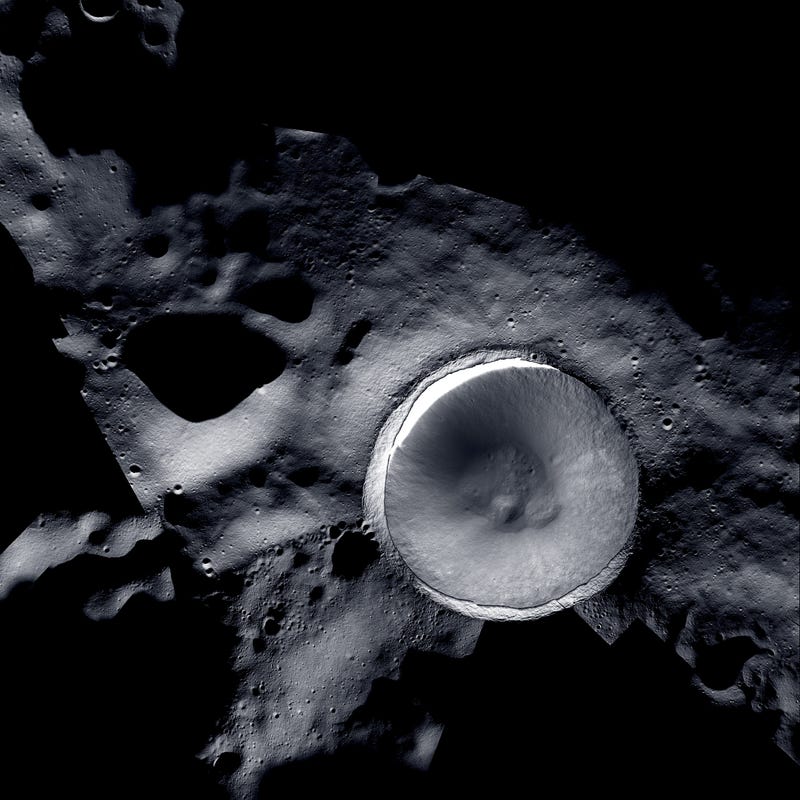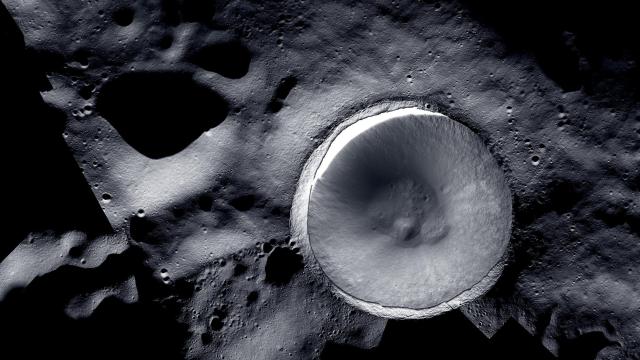NASA released a new mosaic of an impact crater that perpetually lies in the shadows of the lunar south pole. By combining the light sensitivity of NASA’s ShadowCam with the Lunar Reconnaissance Orbiter’s ability to view shadowed regions, scientists put together a rare image of the Shackleton Crater as it appears in unprecedented detail.
LROC (Lunar Reconnaissance Orbiter Camera) has been orbiting the Moon since 2009, while ShadowCam, a NASA instrument on board a KARI (Korea Aerospace Research Institute) spacecraft called Danuri, launched in August 2022.
Each camera has distinct features that allow them to view the Moon in different ways. LROC is designed to operate in extremely low-light conditions but has limited ability to photograph shadowed parts of the Moon that never receive direct sunlight. ShadowCam, as the name suggests, thrives in dimly lit regions of the Moon as it is 200-times more light sensitive than LROC. The lunar camera relies on sunlight reflected off of the Moon’s geological features, or off the Earth, to capture images in the shadows, therefore it is unable to capture clear images of parts of the Moon that are directly illuminated, according to NASA.

The recent mosaic was created by combining imagery from the two lunar orbiting cameras working together to reveal both the brightest and darkest parts of the Moon.
Three points on the crater’s rim remain collectively sunlit for more than 90% of the year due to the Moon being slightly tilted on its axis at 1.5 degrees compared to Earth at 23.5 degrees, according to NASA. Sunlight never reaches the floor of the crater, however, rendering it permanently shadowed.
Previous evidence has suggested that permanently shadowed regions on the Moon may hold reservoirs of water ice, which could be used as a valuable resource for future crewed missions that want to land on the lunar surface.
“Future Artemis missions to the Moon’s South Pole may use these highly illuminated regions to make use of solar energy and support a base camp with trips into shadowed regions to determine what the low-temperature crater holds,” NASA wrote. “The South Pole also provides near constant communication with Earth.”
